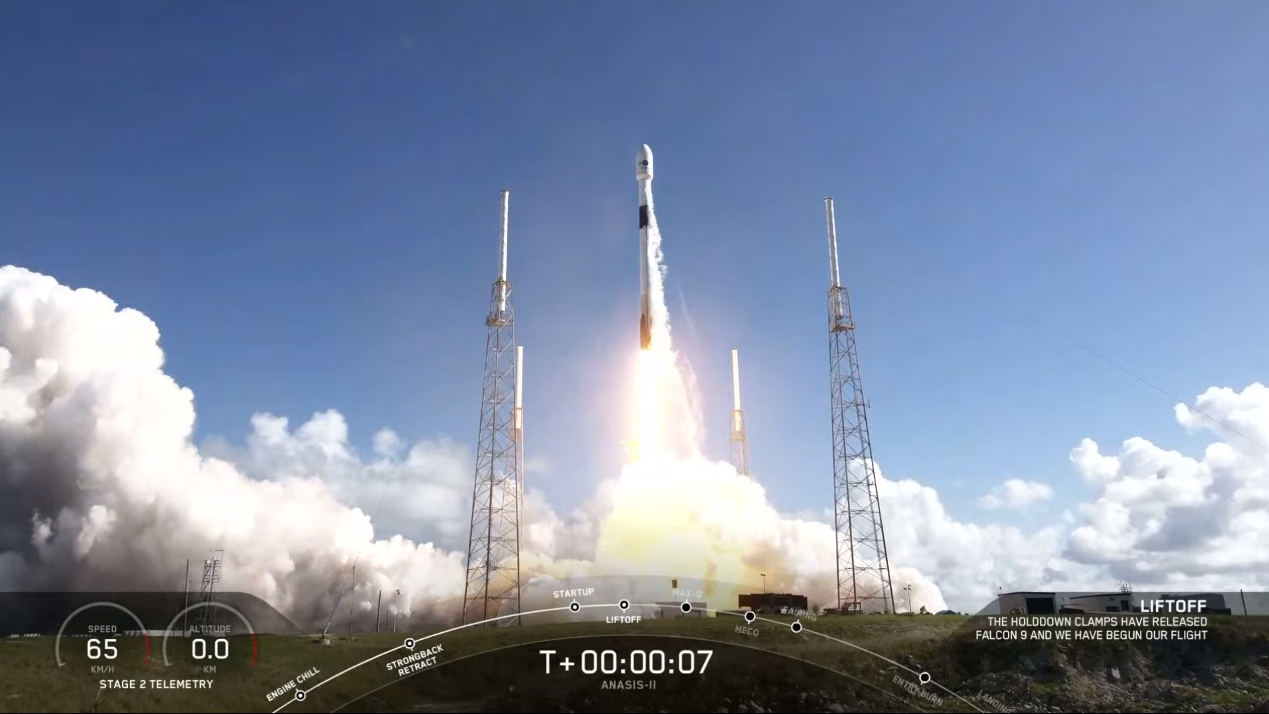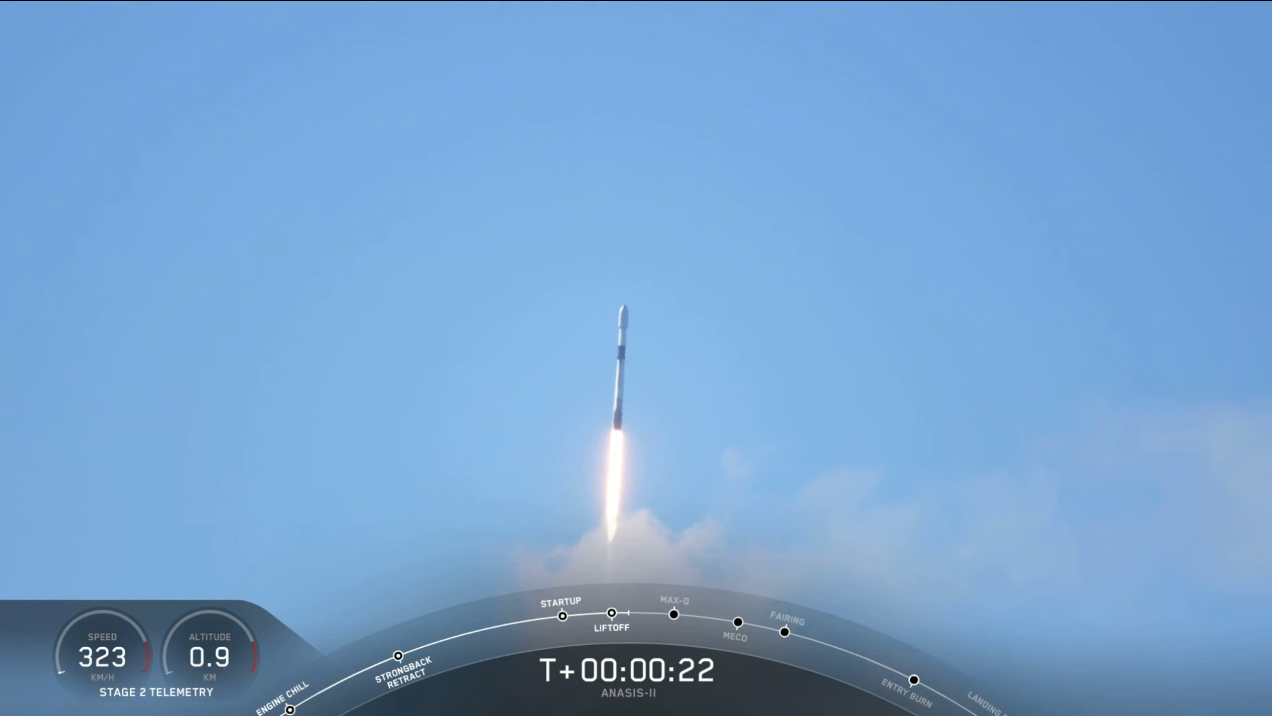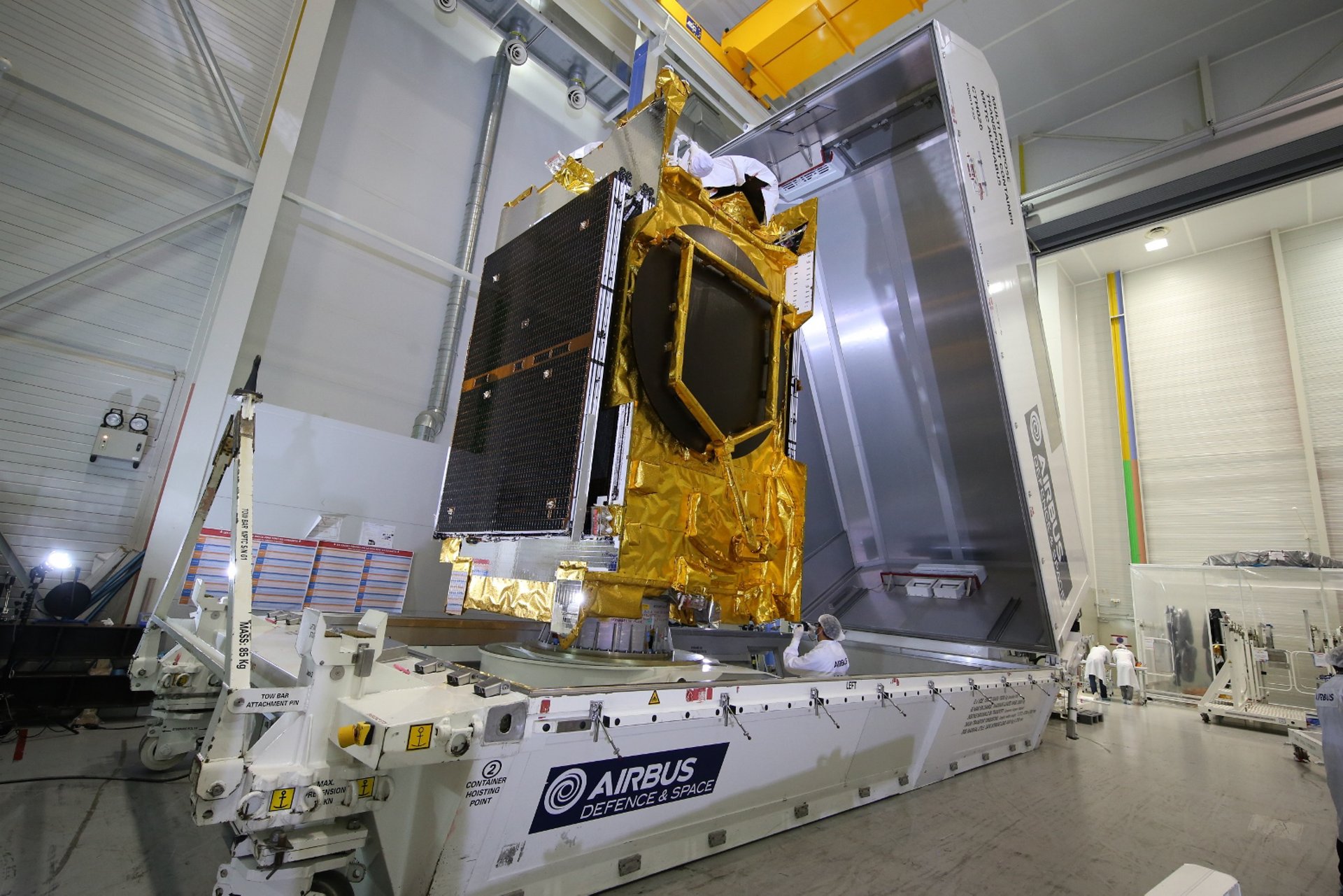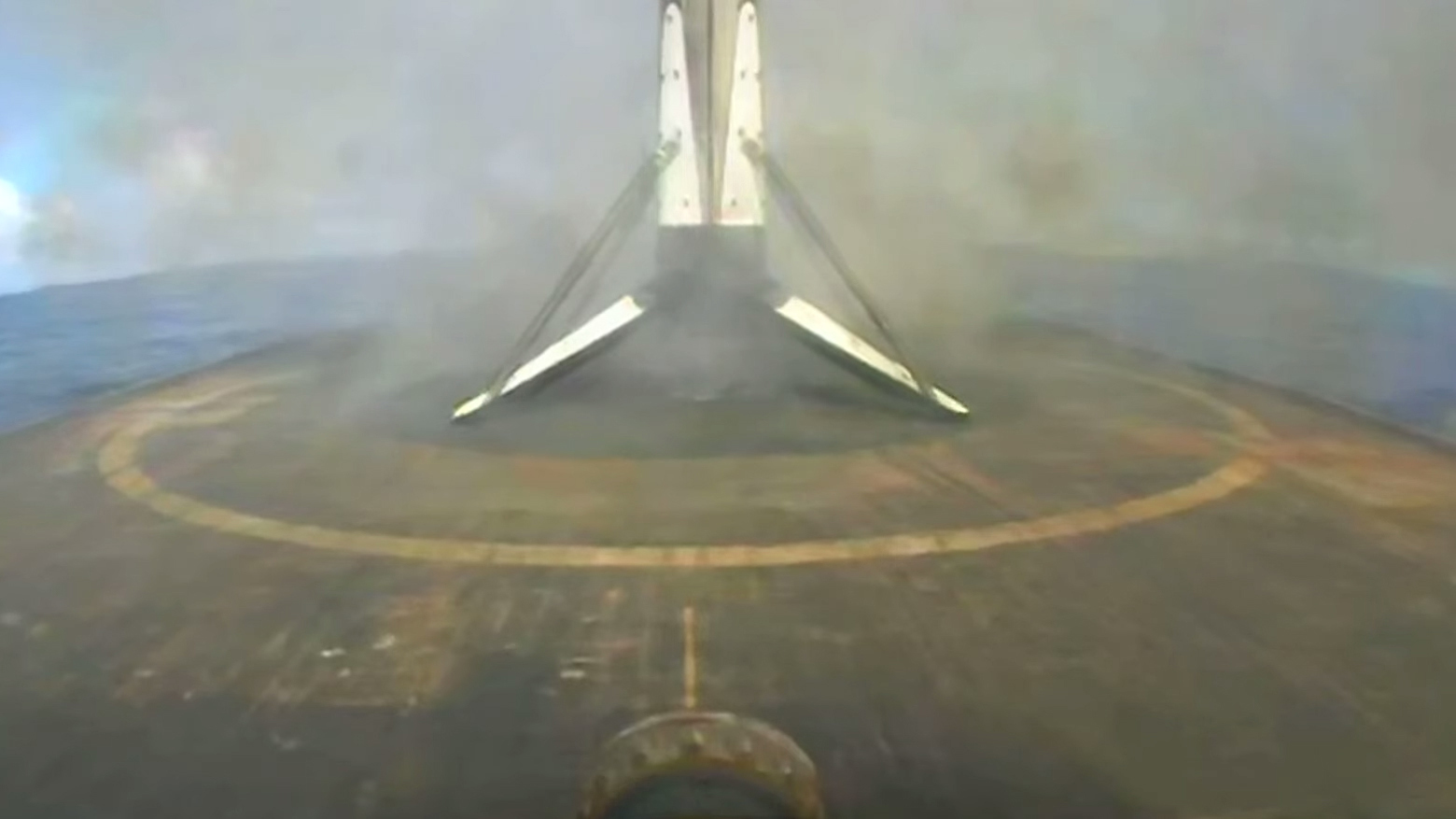SpaceX launches South Korea's 1st military satellite, nails rocket landing at sea
CAPE CANAVERAL, Fla. — SpaceX successfully launched South Korea's first military satellite Monday (July 20) and aced a rocket landing, too, to mark its 12th launch of the year.
A sooty Falcon 9 rocket took to the skies today (July 20) at 5:30 p.m. EDT (2130 GMT), off from Space Launch Complex 40 at Cape Canaveral Air Force Station here, following a 30-minute weather delay.
"It's been a great day," said John Innsprucker, Falcon 9 SpaceX's principal integration engineer, during live commentary. "It took a little while getting here, but well worth it, with a totally successful mission today."
The mission was originally slated to launch on July 14, but was postponed by SpaceX to allow time for additional preflight rocket checks.
It was a beautiful sunny afternoon in Florida as the rocket climbed into blue skies. After liftoff, the rumble from the Falcon 9’s first stage engines set off car alarms at the viewing site. Onlookers could hear the engine rumble even after the rocket climbed into the clouds.
Video: Watch SpaceX nail its Anasis-II Falcon 9 rocket landing at sea
Related: See the evolution of SpaceX's rockets in pictures




For today's mission, the California-based rocket builder launched South Korea's first military communications satellite, called Anasis-II. Built by Airbus Space and Defense, the spacecraft is based on the Eurostar E3000 satellite design and "will provide secure communications over a wide coverage," Airbus said in a statement.
Breaking space news, the latest updates on rocket launches, skywatching events and more!
Previously, South Korea's military relied on both international as well as civilian satellites for its communications. Now the company will rely on Anasis-II, a satellite formerly known as KMilSatCom1. Purchased through a deal brokered by Lockheed Martin, the company tasked Airbus with the satellite's construction.
"Anasis-II will play a critical role in maintaining peace in the Korean peninsula, and I'm hopeful that the Republic of Korea will be able to advance not only its IT capabilities, but also its efforts in space R&D through this technological marvel," said Sae Kyu Nam, President of South Korea's Agency for Defense Development, in a recorded statement. The launch coincides with the agency's 50th anniversary, but South Korean officials were unable to attend due to the ongoing coronavirus pandemic, he added.
Today's flight starred a veteran Falcon 9, which previously lofted two NASA astronauts to orbit on May 30 for the Crew Dragon Demo-2 mission.
Still sporting NASA's retro worm logo, the booster's second flight marks another record for SpaceX: the fastest turnaround time yet between launches. Designated B1058 by SpaceX, this booster carried Bob Behnken and Doug Hurley to the International Space Station less than 60 days ago. To date, SpaceX’s fastest turnaround time between launches was 62 days. With today’s successful launch, it’s been just 51 days between this booster's two flights — a record for SpaceX.
It also breaks a record set by NASA in 1985, when the shortest turnaround between flights for the space shuttle Atlantis was just 54 days.
When a booster comes back, SpaceX engineers spend about a month inspecting the rocket (checking avionics, welds, leaks, etc.) to ensure it's safe for flight before putting it back into the launch rotation schedule. The company eventually wants to reduce that down time from weeks to days. So we could see more records set in the near future.
Currently, the company currently has only five active Falcon 9 boosters in its inventory, and of the 12 missions flown this year, two have been on brand-new boosters. So SpaceX is relying heavily on its fleet of veteran rockets.
That means that the majority of flights have and will be on used rockets. SpaceX has two additional brand new boosters scheduled to enter service later this year — one will launch its next crewed mission for NASA, called Crew-1, and the other will launch another upgraded GPS satellite.
SpaceX's success in reusing Falcon 9 first stages has enabled the company to ramp up production of Falcon 9 second stages, which are always new, non-reusable pieces of hardware added for each mission.
Elon Musk, SpaceX's founder and CEO, has said he wants to launch, recover and re-launch a Falcon 9 booster twice within a 24-hour period. But SpaceX isn't close to that achievement just yet. The company has successfully launched and recovered one booster five times. (It launched another booster on five flights, but an engine anomaly caused that booster to miss its drone ship landing.)
SpaceX's upcoming Starlink mission will feature the company's third booster to fly five times. Tucked inside that rocket's nose cone is a stack of 57 Starlink satellites as well as two Earth-imaging microsatellites from BlackSky Global.
That mission, which has been delayed twice due to hardware issues and Florida thunderstorms, is expected to launch at the end of July from the nearby Pad 39A at NASA's Kennedy Space Center.
But that's just the beginning for SpaceX. Following a series of delays, SpaceX has several launches on deck.
Following the next Starlink mission, SpaceX plans to launch the first polar-orbiting mission to lift off from Florida in 60 years. That mission will lift an Argentinian satellite called SAOCOMM 1B (its launch has been delayed since March due to the COVID-19 outbreak), followed by another batch of Starlink satellites.
After that, SpaceX will be preparing to launch its next crew of astronauts to the International Space Station.
Eight minutes after today's successful liftoff, the Falcon 9's first-stage booster returned to Earth, sticking its landing on SpaceX's drone ship Just Read the Instructions, which was positioned in the Atlantic Ocean approximately 400 miles (645 kilometers) east of Cape Canaveral.
The company also deployed two vessels to retrieve the Falcon 9's payload fairing. The clamshell-like nose cone hardware protects a rocket's payload as it travels through the atmosphere.
Historically, this hardware was discarded in the ocean, but SpaceX has worked to recycle payload fairings along with the rocket’s first stage.
To that end, SpaceX has outfitted two ships — GO Ms. Tree and GO Ms. Chief — with giant nets so they can either snag the fairing as they fall back to Earth or to scoop them out of the ocean. (The fairings come back to Earth in two pieces.) To date, SpaceX has rescued several fairings on various flights and according to Musk, this could add up to a potential savings of $6 million per flight.
The effort paid off today: The ships caught both falling fairing halves, Musk announced via Twitter about an hour after liftoff.
SpaceX successfully deployed the Anasis-II satellite approximately 32 minutes after launch, following a burn of the Falcon 9's upper stage.
Follow Amy Thompson on Twitter @astrogingersnap. Follow us on Twitter @Spacedotcom or Facebook.

Amy Thompson is a Florida-based space and science journalist, who joined Space.com as a contributing writer in 2015. She's passionate about all things space and is a huge science and science-fiction geek. Star Wars is her favorite fandom, with that sassy little droid, R2D2 being her favorite. She studied science at the University of Florida, earning a degree in microbiology. Her work has also been published in Newsweek, VICE, Smithsonian, and many more. Now she chases rockets, writing about launches, commercial space, space station science, and everything in between.


